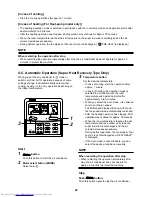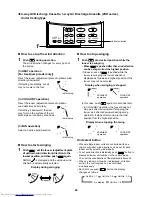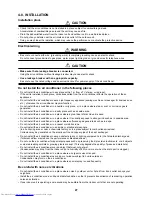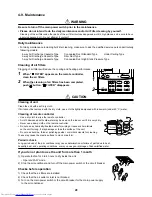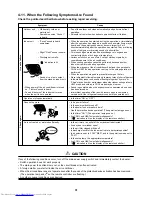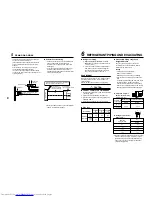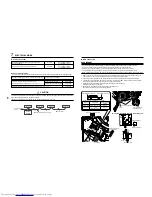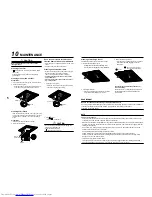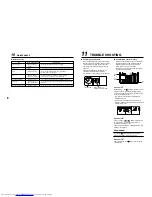
34
CAUTION
New Refrigerant Air Conditioner Installation
• THIS AIR CONDITIONER ADOPTS THE NEW HFC REFRIGERANT (R410A) WHICH DOES NOT
DESTROY OZONE LAYER.
• The characteristics of R410A refrigerant are ; easy to absorb water, oxidizing membrane or oil, and its
pressure is approx. 1.6 times higher than that of refrigerant R22.
Accompanied with the new refrigerant, refrigerating oil has also been changed.
Therefore, during installation work, be sure that water, dust, former refrigerant, or refrigerating oil does not
enter the refrigerating cycle.
• To prevent charging an incorrect refrigerant and refrigerating oil, the sizes of connecting sections of
charging port of the main unit and installation tools are changed from those for the conventional refrigerant.
• Accordingly the exclusive tools are required for the new refrigerant (R410A).
• For connecting pipes, use new and clean piping designed for R410A, and please care so that water or dust
does not enter.
To Disconnect the Appliance from Main Power Supply.
• This appliance must be connected to the main power supply by means of a switch with a contact separation of
at least 3 mm.
• The installation fuse must be used for the power supply line of this conditioner.
• Tighten the flare nut with a torque wrench in the specified manner.
Excessive tightening of the flare nut may cause a crack in the flare nut after a long period, which may result
in refrigerant leakage.
• Wear heavy gloves and a long sleeve shirt during the installation work to avoid injury.
3
SELECTION OF INSTALLATION PLACE
WARNING
• Install the air conditioner at enough strong place to withstand the weight of the unit.
If the strength is not enough, the unit may fall down resulting in injury.
• Install the air conditioner at a height 2.5m or more from the floor.
If you insert your hands or others directly into the unit while the air conditioner operates, it is dangerous
because you may contact with revolving fan or active electricity.
CAUTION
• Do not install the air conditioner in a location subject to a risk of exposure to a combustible gas.
If a combustible gas leaks and stays around the unit, a fire may occur.
Upon approval of the customer, install the air conditioner in a place that satisfies the
following conditions.
• Place where the unit can be installed horizontally.
• Place where a sufficient servicing space can be ensured for safety maintenance and check.
• Place where drained water will not cause any problem.
Avoid installing in the following places.
• Place exposed to air with high salt content (seaside area), or place exposed to large quantities of sulfide
gas (hot spring). (Should the unit be used in these places, special protective measures are needed.)
• A restaurant kitchen where a lot of oil is used or place near machines in a factory (Oil adhering to the heat
exchanger and resin part (turbo fan) in the indoor unit may reduce the performance, generate mist or dew
drop, or deform or damage resin parts.)
• Place where organic solvent is used nearby.
• Place close to a machine generating high frequency.
• Place where the discharged air blows directly into the window of the neighbor house. (Outdoor unit)
• Place where noise of the outdoor unit is easily transmitted.
(When install the outdoor unit on the boundary with the neighbor, pay due attention to the level of noise.)
• Place with poor ventilation. (Before air ducting work, check whether value of air volume, static pressure
and duct resistance are correct.)
• Do not use the air conditioner for special purposes such as preserving food, precision instruments, or art
objects, or where breeding animals or growing plants are kept.
(This may degrade the quality of preserved materials.)
• Place where any of high-frequency appliances (including inverter devices, private power generators,
medical equipment, and communication equipment) and inverter-type fluorescent light is installed.
(A malfunction of the air conditioner, abnormal control, or problems due to noise to such appliances/
equipment may occur.)
• When the wireless remote controller is used in a room equipped with an inverter-type fluorescent light or at
a place exposed to direct sunlight, signals from the remote controller may not be received correctly.
• Place where organic solvent is used.
• Place near a door or window exposed to humid outside air (Dew droping may form.).
• Place where special spray is used frequently.
2
PRECAUTIONS FOR SAFETY



